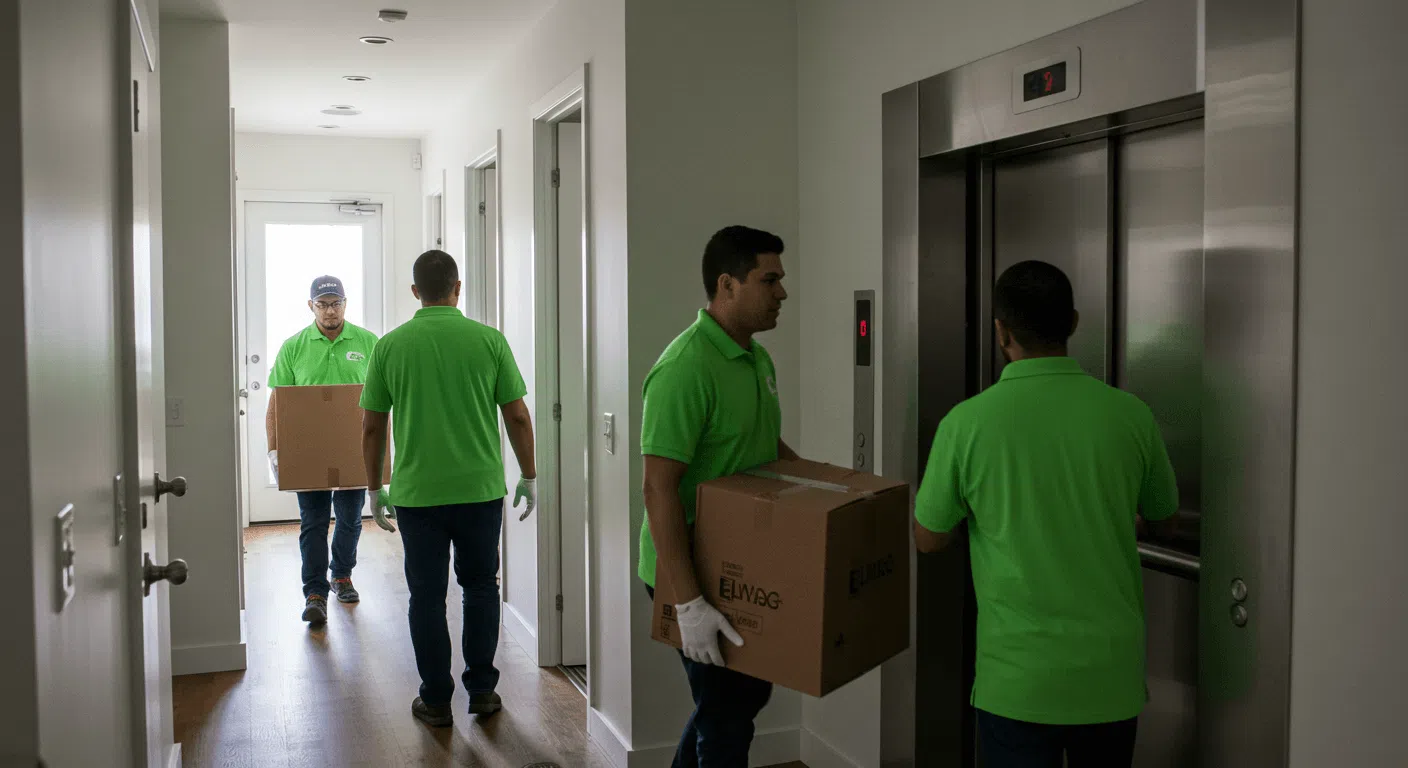Apartment moves in Los Angeles come with their own unique challenges—tight hallways, narrow stairwells, old elevator systems, and notoriously limited parking. Navigating these conditions requires expertise and precision, especially when dealing with multi-story buildings or high-rises. That’s why many residents rely on trained apartment movers in Los Angeles who understand how to handle tricky layouts and fast-paced building environments.
TLDR Quick Guide
- Moving into or out of an LA apartment requires strategy: tight hallways, narrow staircases, elevators, and limited parking all complicate the process.
- Professional movers plan every detail—from elevator reservations to furniture disassembly—to protect your belongings and your building.
- The best apartment moving services minimize delays, avoid damage, and streamline your entire move.
- Local experts understand LA traffic patterns, building rules, and parking limitations better than anyone.
- Hiring seasoned Los Angeles movers saves time, reduces stress, and prevents costly mistakes.
The Real Challenges of LA Apartment Moving
Tight Hallways & Narrow Staircases
LA apartments often feature compact designs, vintage layouts, or modern buildings with tight corridors that make moving furniture difficult. Professional movers use padding, sliders, and strategic maneuvering to avoid damage to walls and belongings. With large items, they often partially disassemble furniture for a safer, cleaner approach.
Elevator Access & Building Restrictions
Many apartment and condo buildings require elevator reservations, signed COIs, or scheduled loading times. Experienced movers know how to coordinate with management, secure access, and protect elevator interiors using padding and covers. This organization prevents delays and ensures a smooth moving schedule.
Limited & Competitive Parking
From Downtown LA to West Hollywood, finding loading zones or street parking can be a challenge. Skilled movers know how to secure temporary parking permits and position trucks without disrupting traffic. This is where choosing local experts—like professional Los Angeles movers—makes an enormous difference.
How Professional Apartment Movers Simplify the Process
Thorough Pre-Move Planning
Top-tier movers conduct a walkthrough or virtual assessment to understand building layout, parking, and potential obstacles. This planning helps them determine crew size, required equipment, and the most efficient moving route.
Specialized Tools for Tight Spaces
Pros come equipped with dollies, lifting straps, furniture pads, and narrow-profile carts designed for apartments. These tools make navigating cramped areas easier while protecting both the building and your belongings.
Efficient Packing and Protection
If you want to avoid the chaos of boxing everything yourself, many residents choose professional packing services. Proper packing ensures items arrive safely and allows movers to transport your belongings more efficiently.
Furniture Disassembly & Reassembly
Bulky sofas, bed frames, or office desks often need to be disassembled to move through tight areas. Trained apartment movers handle this quickly and reassemble everything in your new home.
Smooth Loading and Fast Transitions
With LA’s parking limitations, movers operate quickly to load and unload while the parking window is available. Hiring experts ensures no valuable time is wasted.
Why Choosing Local LA Apartment Movers Matters
Apartment moves are very different from standard residential relocations. Local movers understand LA’s traffic patterns, loading zones, city restrictions, and building styles. Working with specialists like experienced local moving professionals helps you avoid common issues and keep your move efficient and stress-free.
Additional Services That Support Your Move
Residential Moves
If your move involves more than just an apartment—such as transitioning from a single-family home—professional residential moving services ensure larger items and households are handled safely.
Long-Distance Apartment Relocations
For those relocating out of LA or moving to California from another state, trained specialists in long-distance moving simplify every stage of your transition.
Key Takeaways
- LA apartment moves demand experience with restricted spaces, heavy foot traffic, and strict building protocols.
- Reserving elevators, securing parking, and protecting walls and floors are critical steps.
- Professional movers use specialized gear to maneuver large furniture through small areas safely.
- Local knowledge matters—only trained Los Angeles movers know how to navigate the city’s parking and loading conditions.
- A reputable team ensures a smooth, damage-free move from start to finish.
Frequently Asked Questions
1. How far in advance should I book apartment movers in Los Angeles?
It’s best to book at least 2–4 weeks in advance, especially during weekends or peak seasons. This ensures time to arrange elevator reservations, parking, and logistics. Last-minute bookings are possible, but availability can be limited.
2. Do movers handle furniture that won’t fit through hallways?
Yes. Professional movers assess oversized furniture and determine whether to disassemble, angle, or pivot it through tight areas. If an item cannot pass safely, they may suggest alternative solutions such as balcony hoisting when permitted.
3. Can movers help with packing for apartment moves?
Most reputable moving companies offer full or partial packing services. They provide materials, pack efficiently, and ensure fragile items are protected. This saves time and reduces the risk of breakage.
4. How do movers deal with limited parking in LA?
Experienced movers are familiar with LA parking rules and can secure loading spots or temporary permits when needed. They also position trucks strategically to minimize disruption. This prevents delays and avoids fines.
5. Do movers protect floors, walls, and elevators during the move?
Yes. Movers use padding, door-frame protectors, and floor coverings to prevent damage in both your old and new apartment. Elevators are lined with protective materials to keep building management satisfied and ensure safety.






